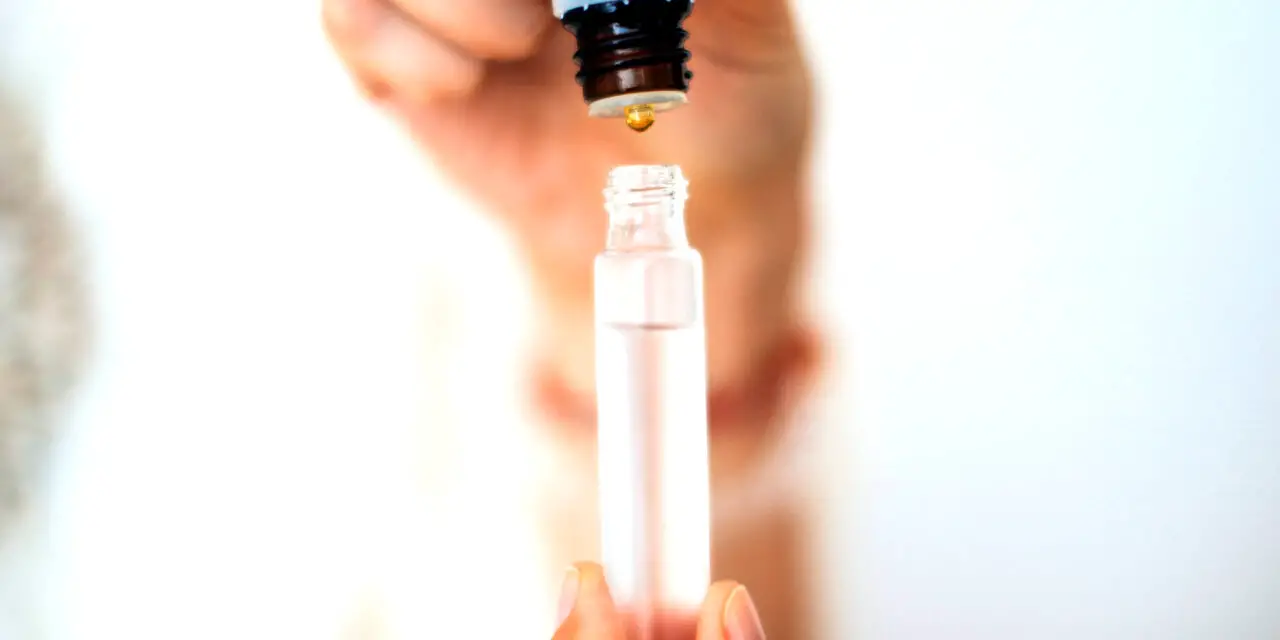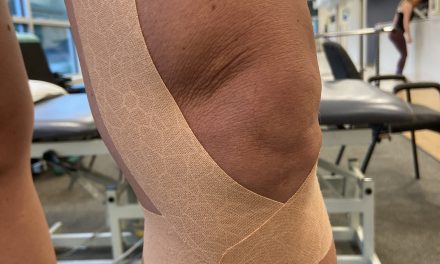Aromatherapy massage combines scented, plant-based oils or lotions with massage therapy, often used for enhancing relaxation and reducing pain. It’s easy to assume that the term “aroma” simply comes from the strong fragrances and there’s little use beyond natural perfume. But such aromatherapy has been used for at least 6,000 years in various cultures worldwide, including India, Egypt, China, and Renaissance Europe. Aromatherapy uses oils that have been extracted from aromatic plants that are able to impact the human body.
For years, studies have been conducted to assess the validity of claims and correlations aromatherapy has had on the physiological effects in the human body. Today, aromatherapy oils and lotions can be found at local drug stores and are sold as natural remedies to everyday ailments.
How does aromatherapy work?
The term “aromatherapy” comes from the Greek word “aάρωμα” (“aroma”) meaning “scent” because of the aromatic nature of the plants that are used. The modern resurgence of aromatherapy into modern medicine was in the 1940s by a French chemist named Jean Gattefossé. These natural oils are harvested from various plants and used in healing all over the world.
There are three ways in which our bodies can absorb the oils of these plants:
- topical
- inhalation
- ingestion
The most common form of topical use is through massage, whether you are receiving one from a therapist or working the oils into your own skin. Other forms of topical absorption include soaking in a bath or using the oils in a sauna. Heat helps pores open allowing the skin to absorb the oils as well as increasing circulation and the medicinal elements so they may permeate the body.
Inhalation can be used with or without topical application. When breathing, we inhale particles from the air around us. Those particles attach to our lungs and our olfactory bulb in the nasal cavity which links directly to our brain.
Lastly, some of the extracted elements can be ingested, absorbing into the body through the digestive tract. Some of the natural chemicals will only absorb into the body in specific ways, or can be used for different ailments depending on distribution method.
Types of aromatherapy oils
Depending on how many historical fiction novels you read, some of these may be familiar to you. Records involving the use of herbal medicines and oils began with folklore and mythologies. Scientists and chemists have set to researching the validity of the claims of the old stories and backing up these claims with scientific evidence.
Lavender
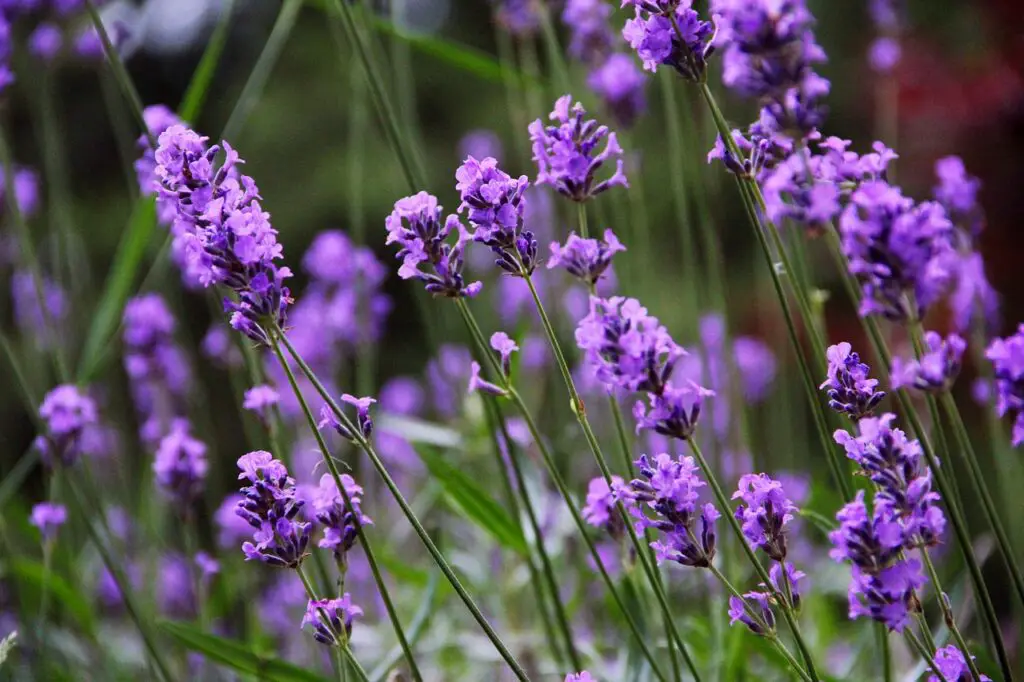
Lavender plant. (Photo by Riley, distributed under the Creative Commons Attribution 3.0 Unported license.)
Lavender is among the more well-known of the oils used in aromatherapy with its ability to calm. Lavender oil is derived from the plant of the same name and oil can be extracted from the stems, flowers, and blossoms. In our high stress, fast paced world it’s no wonder that lavender is so prevalent, but it has many beneficial effects.
Other than its sedative effects, it also has topical antibacterial and antifungal properties, and its scent has been known to alleviate headaches and suppress aggression and anxiety.
Lavender has also been shown to promote new cell growth which has amazing implications and makes it ideal for abrasions, burns, and many different skin issues.
Peppermint
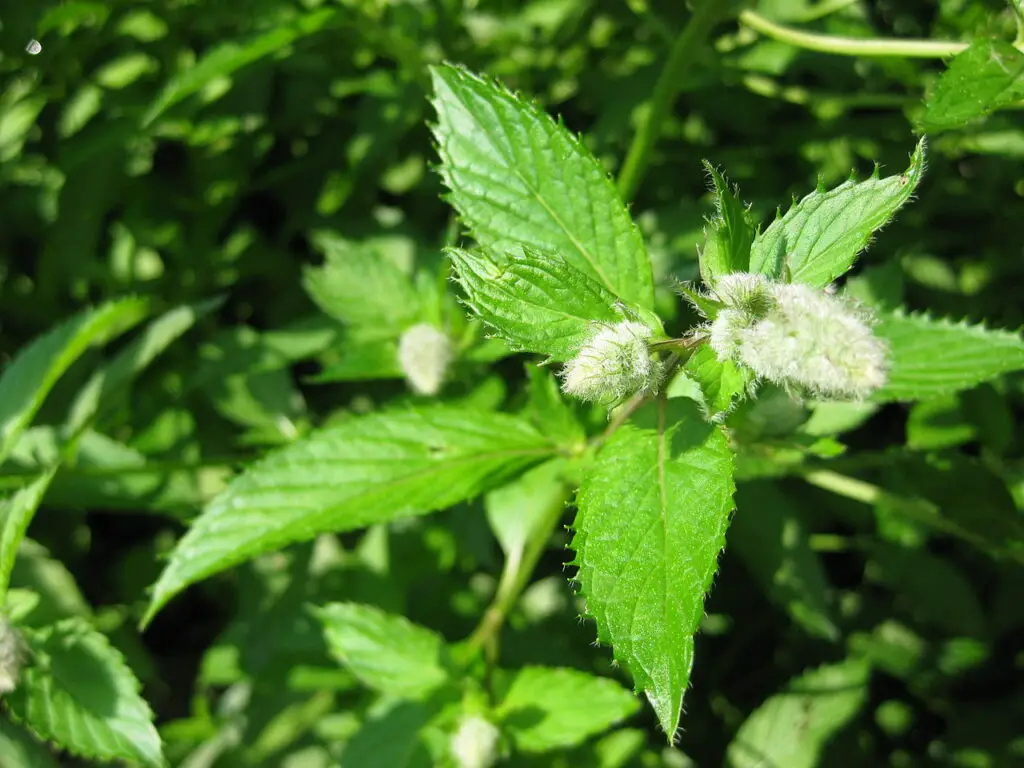
Peppermint plant. (Photo by Gürkan Sengün. Public domain.)
There are 600 kinds of mint but one of the most influential on human physiology is peppermint. It is best known for being a natural decongestant when inhaled, but it can help with far more.
Topical application can relieve ailments in the superficial soft tissue helping with muscle pains, spasms, and pains caused by arthritis.
When ingested Peppermint aids the digestive tract. The oil is harvested from the leaves and contains 44% menthol. Peppermint also aids the immune system as an anti Inflammatory, anti-infectious, antimicrobial, antiseptic, and antifungal.
Frankincense
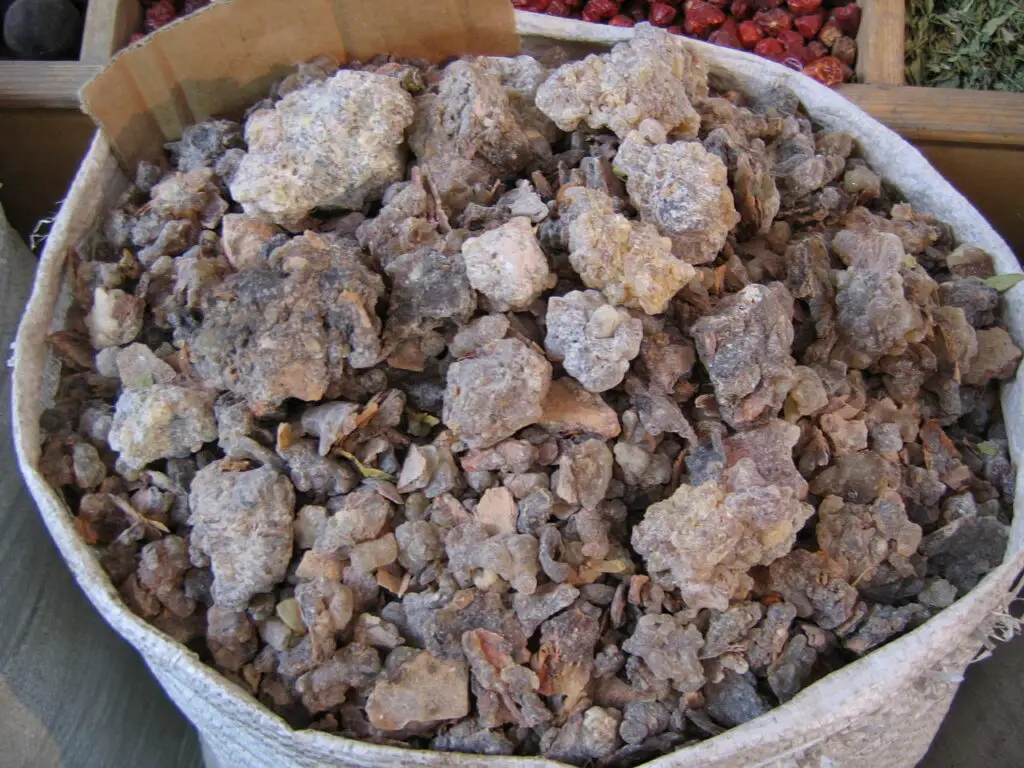
A basket of Frankincense resin in a market in Dubai. (Photo by Liz Lawley, distributed under the Creative Commons Attribution-Share Alike 2.0 Generic license.)
Frankincense has the strong bitter fragrance that encompasses the peace and love movement of the 1960s and 1970s. It is a resin from Boswellia trees and when burned its smoke produces tetrahydrocannabinol, or THC. It is this very chemical that is the source for some of the good it can do.
Frankincense aids in clearing the lungs and other mucus-related problems, it also has the ability to lighten heavy menstrual cycles, and ease postnatal depression.
Like many of the oils on this list it is also a sedative, an antiseptic, an anti-inflammatory, which can be used as a pain reliever. Historically frankincense has been used for sores, ulcers, and digestive complaints from sore gums to being used as a diuretic.
Bergamot

Bergamot fruit. (Photo by Jacopo Werther, distributed under the Creative Commons Attribution-Share Alike 3.0 Unported license.)
Bergamot is a fruit that is a bitter cross between a lemon and an orange, and its oil is extracted from the rind of the fruit either through peel or zest.
Its oil can be used as an air purifier for its antibacterial, antifungal, and antiviral effects, but it is also used as a calming agent.
Oils and lotions containing bergamot can be used topically working as a deodorant or healing wounds as an anti-inflammatory but can cause photosensitivity of the skin.
When ingested bergamot can be used for digestive regularity, but its sedative effect will also help to calm anxiety and ease depression.
Coriander
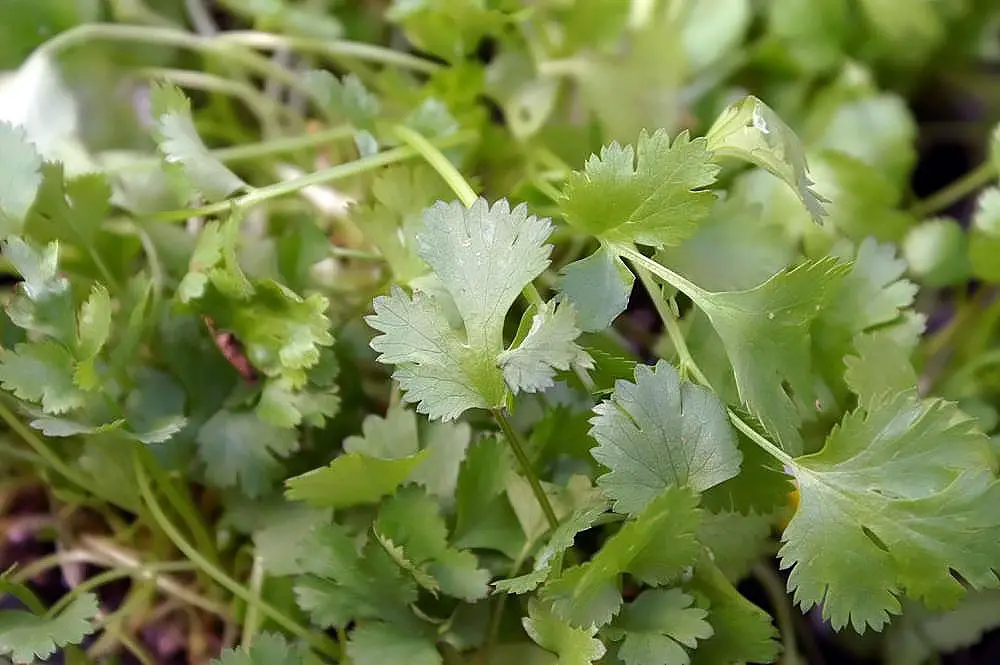
Coriander plant. (Photo by Judgefloro, distributed under the Creative Commons Attribution-Share Alike 4.0 International license.)
Coriander is an herb that can be used to encourage appetite and assist in digestion by relieving muscle spasms and gas in the digestive tract while having a sedative hypnotic effect.
The many component properties of this plant and their chemical composition can make coriander more expensive than other aromatherapy oils, but for good reason.
This oil can be culled from all parts of this plant which possess antioxidant, anti‐convulsant, anti‐mutagenic, and anti‐microbial activity. Coriander is also an anti‐diabetic, a diuretic, and can even aid in destroying parasitic worms.
Rosemary
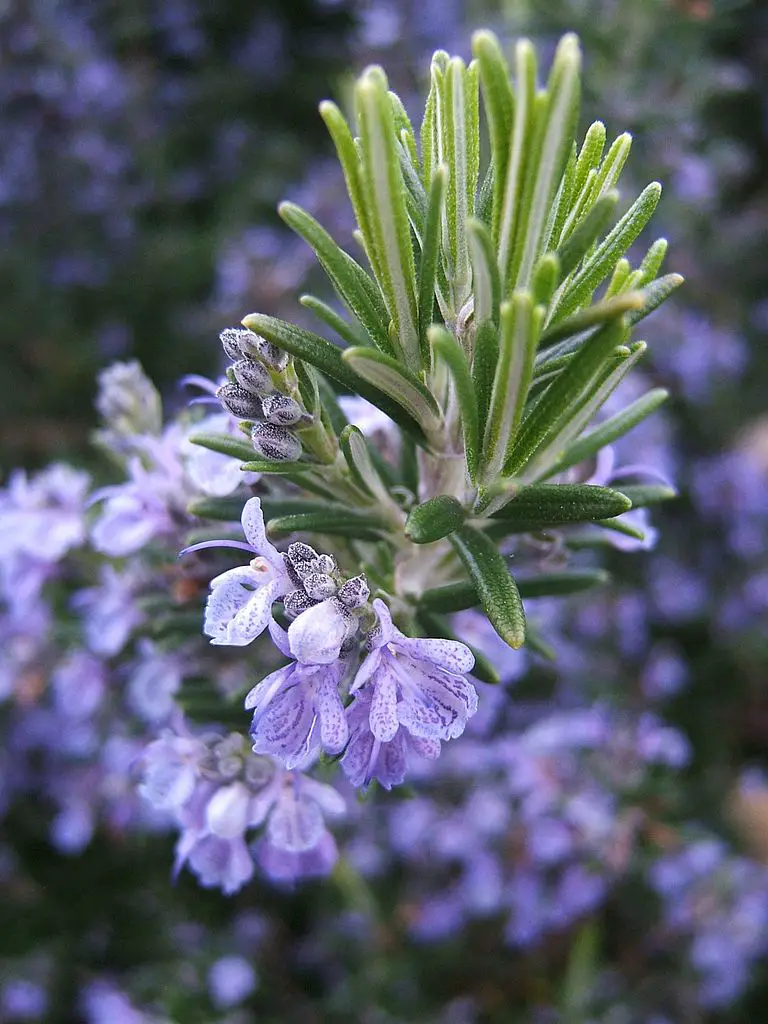
Rosemary plant. (Photo by Dionysia, distributed under the Creative Commons Attribution-Share Alike 3.0 Unported license.)
The benefits of rosemary are felt throughout every system of the body. In the digestive system, rosemary is known to relieve the symptoms of indigestion, constipation, and colitis as well as having the ability to aid the liver and gall-bladder.
Rosemary aids circulation by regulating blood pressure and delaying the hardening of arteries, but much of its benefit goes to the central nervous system.
Oil from any part of the rosemary plant has had positive impacts on hysteria, paralysis, and cognitive functions even in those with dementia and Alzheimer’s disease. It can also be used as a skin and hair tonic providing treatment to conditions like hair loss, dandruff, and greasy hair.
Roman Chamomile
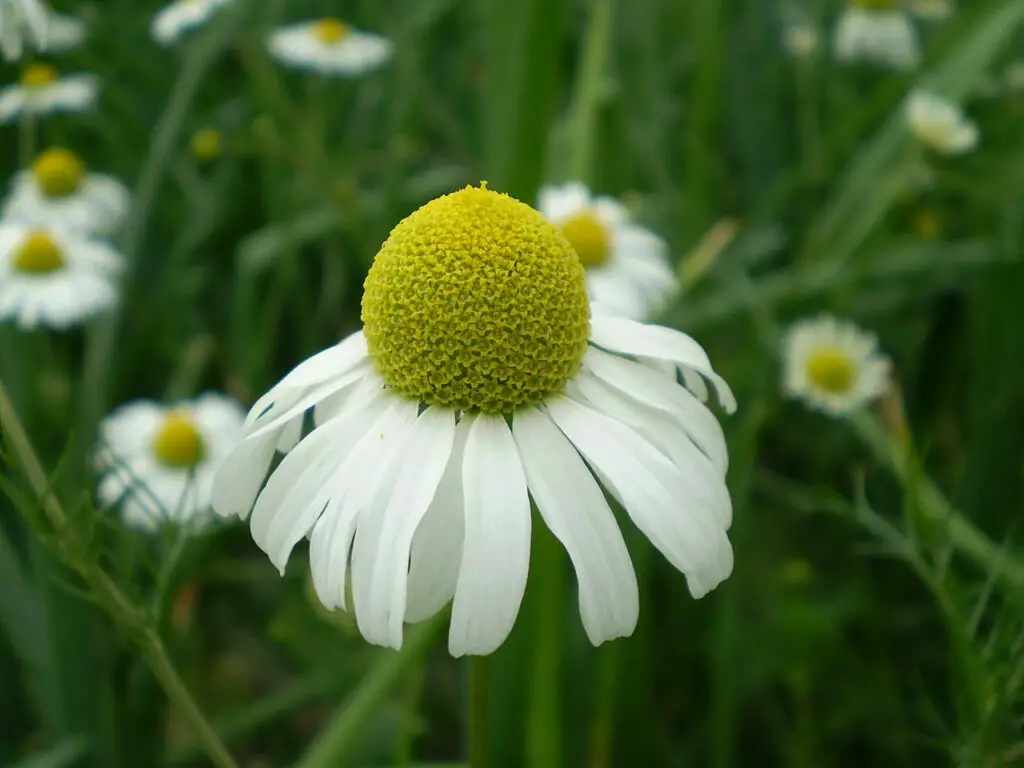
Chamomile plant. (Photo by Rob Hille. Public domain.)
Chamomile is most known as a calming tea to curl up with before bed and there are good reasons for that. Chamomile is a pain reliever whose calming effect helps with insomnia, anxiety, stress, overactive minds, and even depression. Beneficial oils come from the miniature daisy-like flowers of this plant.
Some of its lesser known superpowers help those with skin conditions like cold sores, sunburns, psoriasis, and eczema along with ulcers and wounds when applied topically.
Eucalyptus

Eucalyptus leaves. (Photo by John Moss. Public domain.)
Eucalyptus is another jack-of-all-trades when it comes to helping the body. Oil from this plant is harvested from fresh leaves and branches of the eucalyptus plant and contains many compounds that create a physiological response in our bodies.
Within the nervous system, eucalyptus can ease symptoms of nerve damage known as neuralgia, assist with headaches and physical weakness due to illness.
Eucalyptus boosts the immune system by increasing immunity against measles, flu, and chickenpox, but it seems to have a more profound effect on illnesses related to the respiratory system. Eucalyptus has long been used for illnesses such as: colds, throat infections, coughs, bronchitis, asthma, and sinusitis.
As a topical ointment, this oil can be used on wounds, burns, herpes, lice, rheumatoid arthritis, helping muscle and joint pain all while repelling insects and treating their bites.
Like many of the oils on this list, eucalyptus can also be used as an antioxidant, anti-inflammatory, antibacterial (suppressing cell growth), and anti-proliferative but should not be used while pregnant or nursing.
According to a 2015 review, “researchers have proved its efficacy beyond doubt in treatment of various metabolic and infectious diseases. The results are promising and can be utilized for treatment of multifactorial diseases of various origins in humans.”
Aromatherapy massage risks
To know if aromatherapy would work for you, it’s something you would have to try. Even when it comes to manufactured pharmaceuticals, not everything works for everyone.
We have been programmed by advertising executives to associate “natural” and “organic” with health, but arsenic is both natural and organic, but ingesting it would be entirely detrimental to one’s health.
There are many adverse reactions to aromatherapy oils, also called essential oils, with the most common being allergic reactions. Other detrimental effects that have occurred are:
- Respiratory distress
- Hypotonia
- Convulsions
- Lethargy
- Hypotonia
- Tachycardia
- Dyspnea
- Acute pulmonary oedema
- System toxicity
- Contact dermatitis
- Necrotic blisters
- Skin and muscle necrosis
- Kidney damage toxicity
- Burns
- Diarrhea
- Vomiting
- Nausea
- Confusion
These oils have had the greatest adverse effects in children when overexposed with symptoms like:
- Prepubertal Estrogen
- Coma
- Seizures
- Death
Everything in the body is connected and medications are distributed throughout the body by way of circulation. What helps one ailment could make another worse.
Just because these are natural oils from everyday plants doesn’t mean that the same considerations shouldn’t be taken as when you add a prescription medication or supplement. The benefits of these plants will not outweigh allergies or genetic intolerance.
If you are interested in incorporating aromatherapy into a massage, be sure that the type of oil you are using is safe for you. Anyone pregnant or nursing will be limited in what oils can be used safely due to the physiological effects that some oils have on the body.
Is it safe to use aromatherapy massage during pregnancy?
Receiving an aromatherapy massage during pregnancy does take extra consideration, but it can be done safely. Any oils that have an effect on the reproductive organs should be avoided and this does rule most aromatherapy out.
There is conjecture on which oils are safest for pregnancy, and before trying any, you should talk to your healthcare provider. A few that many healthcare professionals and researchers widely agreed upon are:
Not all therapists will feel comfortable using the oils listed above because there is still conjecture in the massage community with some of these.
However, studies have shown them to be safe but not always effective in treatments on a physical level. Such may be due to the extreme changes a body goes through when pregnant, or it could mean that the studies didn’t produce enough evidence one way or another.
If there’s a specific oil you would like to try, make sure you check with a medical provider.
How much is aromatherapy massage?
Costs will vary, but at franchise clinics like Hand & Stone, Massage Envy, and Elements, aromatherapy is considered an upgrade and will cost an extra $10 to $15.
When going to higher end spas, their menus will have both upgrade options as well as body treatments. Many, if not all, body treatments include aromatherapy.
Upgrade options at spas can be as little as $30, but the max will depend on the place. Some oils are considered rare or hard to extract, which drives up the price.
Spas may also have signature blends which will also increase the rarity of the blend and increase the price. These blends can make it more difficult to identify the individual ingredients, but that list should be made available to you for safety concerns.
Tips for using aromatherapy massage and oils
Maximize the benefits of your aromatherapy massage session by doing these things
- Let your therapist know what you’re hoping to accomplish from the massage. Some oils can help to warm tissue and to address problem areas, but this needs to be communicated to ensure your therapist works on the intended area.
- Do your homework in learning about these aromatherapy oils, such as the components that make these oils’ effects strong, which may increase the chances of a topical reaction.
- Note that scent is one of the strongest ties to memory, and strong aromas can have unintended psychological effects if someone has a traumatic memory tied to a specific scent.
- Take a whiff of any aromatherapy oils or lotions before the massage starts. If you’re trying any oils that are new to you, test it on a small area of your skin—like on your wrist or back of your hand—to minimize any negative reactions.

Lindsay Jones, LMT
Lindsay is a licensed massage therapist and a mother of three, who specializes in rehabilitation with emphasis on prenatal and postnatal care.
After graduating from the National Holistic Institute in San Jose, Calif., she went on to study how pain affects the body and how it can be alleviated during the constant changes of pregnancy and early motherhood.
In her free time, Lindsay has a deep love of all forms of art from storytelling and music to sewing and painting.

